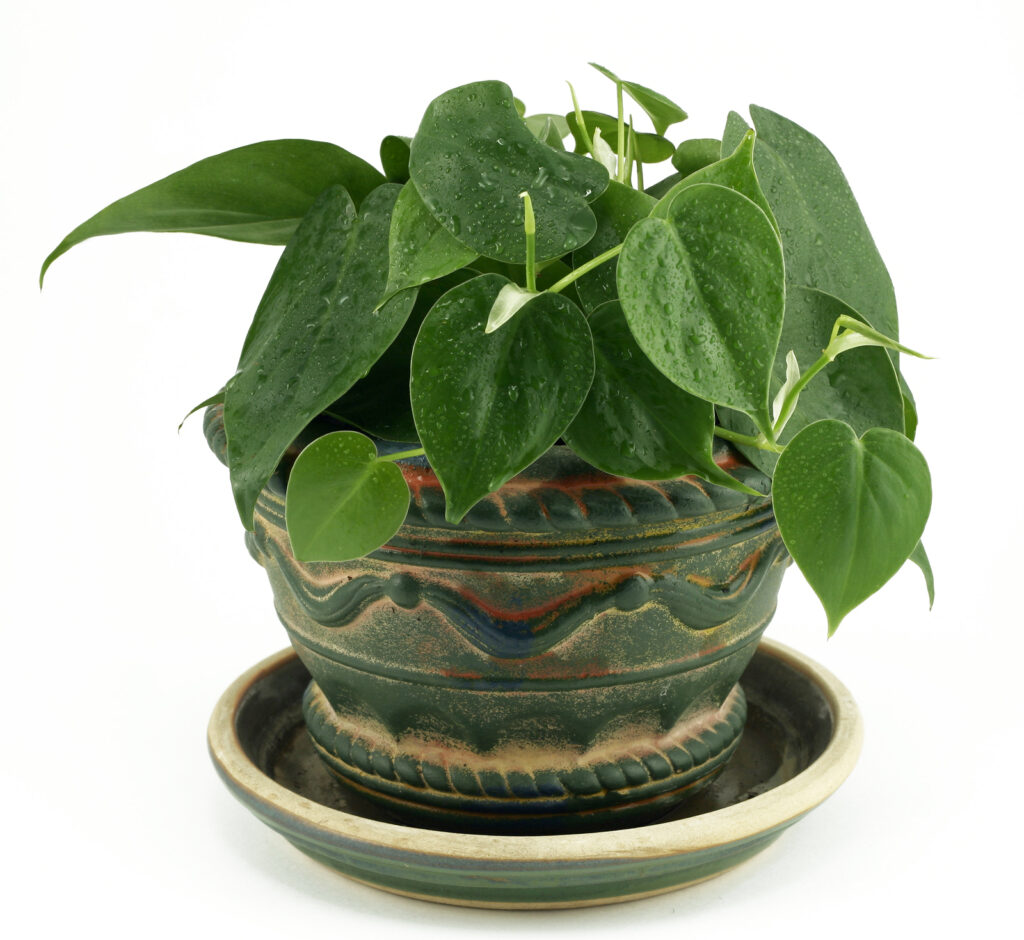Philodendrons have large, glossy, leather leaves in a variety of leaf shapes, colors, and sizes. Philodendrons are tropical climbing, trailing, or occasionally erect plant with thick stems to 6 feet (2m) in length.
Philodendron leaves may be green or red, and heart-shaped, fiddle-shaped, sword-shaped, rounded, or triangular. They may have smooth edges or deep clefts.
Some Philodendrons grow upright, developing trunklike stems as they mature, others are climbers requiring supports.
Philodendrons are among the easiest houseplants to grow. All do best in bright, but not direct light.
Philodendron is a genus of about 500 species of tropical climbers, shrubs, and small trees. Philodendrons are native to rainforests in Florida, Mexico, the West Indies, and Central and tropical South America.
Get to know Philodendron
- Plant type: Tropical evergreen vine
- Growing Zones and range: Zones 10-11
- Hardiness: Tender
- Temperature: Night temperatures of 65°-70°F (18°-21°C), warmer day temperatures
- Height and width: Grows several inches to 9 feet (3m) depending on variety; climbing or bushy growth; stems carry thin aerial roots
- Foliage: Lobed green leaves that can be marked with gold, red, or white; young leaves are as distinctively shaped or colored as older leaves.
- Uses: Houseplant; tropical garden plant
- Common name: Philodendron
- Botanical name: Philodendron spp.
- Family: Araceae
- Origin: Rainforests in Florida, Mexico, West Indies and Central and tropical South America
Where to plant Philodendron
- Light outdoors: Grow Philodendron in dappled or partial shade outdoors.
- Light indoors: Philodendron needs medium to high indirect light; heading or bushy types tolerate lower light.
- Soil outdoors: Grow Philodendron in fertile, humus-rich, moist but well-drained soil.
- Soil indoors: Philodendron will grow in most soil mixes.

How to water and feed Philodendron
- Keep the soil just moist for Philodendron. Water Philodendron sparingly in winter.
- Indoors, Philodendrons do best when their pots are set in a tray with pebbles and water or when double-potted surrounded with peat moss kept wet.
- Fertilize philodendron every 3 months.
Philodendron care
- Philodendron can be repotted at any time.
- Direct sun can produce tan patches of sunburn on leaves; move the plant out of the sun.
- Climbing Philodendrons need a support sucha as a peice of bark or a moss-covered pole.
Growing Philodendron as a houseplant
- Philodendron dos best in bright light; limited light may result in small leaves and straggly growth.
- Philodendron needs an average to warm temperature and medium humidity.
- the soil should be allowed to dry to the touch between thorough waterings; overwatering can cause brown spots to form on the leaves and root rot.
- Philodendron leaves can be rinsed or sponged with water often to keep them clean and glossy.
- Fertilizer should be applied regularly during spring and summer.
Philodendron pests and diseases
- Philodendron can be attacked by mealybugs, scale insects, and spider mites.
- Philodendron is susceptible to fungal and bacterial leaf sport. Root rot is common.
Philodendron propagation
- Root tip or stem cuttings from vining types at any time.
- Philodendron can be propagated by layering.
- Grow self-heading (bushy) types from seed, or separate and pot up the offsets.
Philodendron varieties to grow
- Philodendron bipebbufikuynm horsehead philodendron. Deeply cleft, triangular, glossy green leaves to 15 inches long.
- P. x ‘Burgundy’. Has narrow triangular leaves 12 inches long; leaves are bright red when new and turn green as they mature.
- P. erubescens, red-leaf philodendron also called blushing philodendron has dark green triangular leaves with purplish sheen and red edges; undersides of leaves are coppery.
- P. pinnatilobum ‘Fernleaf’, fernleaf philodendron. Finely cut leaves that look like fern fronds.
- P. scandens oxtcarduynm also called P. cordatum), heart-leaf philodendron sometimes called parlor ivy. Trailing plant with heart-shaped leaves; leaves emerge bronze and turn green as they mature.
- P. selloum, tree philodendron. Grows to 6 feet tall; leaves are glossy green, deeply cleft, and 18 inches long.















